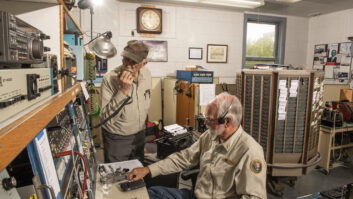
Fig. 1 As I wrote in the Jan. 1 issue of Radio World, a German physicist named Georg Ohm published a paper in 1827 that described the interaction between voltage, current and resistance in an electrical circuit (see radioworld.com/ohmslaw). His findings were revolutionary and became a scientific “law” that today bears his name.
The law states that when an applied voltage of 1 volt causes a current of 1 ampere to flow in a circuit, the circuit’s resistance is 1 ohm.
All well and good back in the buggy whip days of 1827, but circuits found in the real world are much more complex than Ohm’s simple Law described.
Gustav Kirchhoff, another German physicist, took up that issue in 1845. He ended up expanding on Ohm’s Law, and in the process got his own name attached to a law that, like Ohm’s, is known and used by electrical and electronic engineers and technicians.
IT ALL ADDS UP
Kirchhoff’s Law builds on Ohm’s principles to describe current and voltage in all resistive circuits, and had two interrelated parts.
The first part of the law states that the voltage drops across all of the various resistances of a series circuit are cumulative and total. That is, if you apply a known voltage from a power supply — like a battery — to a series of resistors connected end to end, it doesn’t matter if there are one, two or a thousand individual resistances, the entire applied voltage will be “dropped” across those resistances so that at the other end of the battery, there will be nothing left over.
The law’s language is a bit different, but that is the gist.
Part two of the Law speaks to the current created by that applied voltage. It states that the current flow in all parts of a series circuit must equal the total current flow in that circuit. It further states that in a parallel circuit (Kirchhoff called such circuits “nodes”) the current in each “node” would be cumulative and must equal the total current coming from the voltage source.
To understand this second part of the law, think of the battery in your car. The 12 volts pushes current out to the headlights (drawing, say, 20 amps of current), taillights (5 amps), the ignition system (another 10 amps) and most important for us, the radio (an amp, maybe, unless it’s in an 18-year-old’s hotrod; then it might go 50 amps or so). Kirchhoff’s Law demands that all of those currents must add up to the current being drawn out of the battery; 36 amps for those of us with small radios; 85 amps for the Turbo-Dynamic-Extreme-Density Powered Subwoofer crowd.
Each “branch/node” of the circuit is connected across the battery, rather than being “daisy chained” one to the next, to the next. This is known as a “parallel” circuit configuration because the various circuits are connected one after the other to the battery, much like railroad ties parallel each other as they connect across rails.
This idea — that if you add up the current flows in each of those parallel circuit branches, they must equal the total current flow coming from the battery — might seem intuitive to us; but in 1845, it was not well understood. In fact, Ohm had used heat conductance to explain electrical conductance and so thought electrical current remained latent in a conductor even after the voltage was removed, just as heat would remain in a piece of metal even after it was removed from a flame. Kirchhoff’s Law showed that this was impossible.

Fig. 2 One point to add here: Both Ohm’s and Kirchhoff’s Laws deal with voltage, current and resistance in purely resistive DC circuits, like those using a battery (or the DC voltages in broadcast transmitter power supplies). AC circuits, on the other hand, contain components that react to applied voltages differently from what happens in DC circuits (those components are capacitors and inductors and are said to have “reactance” characteristics). Even in AC circuits, though, both Laws give results that are fairly accurate approximations of the real world.
THE CURRENT CALCULATION
Like Ohm’s Law, Kirchhoff’s Law is absolutely critical to understanding how electrical circuits work and to troubleshooting those circuits. For example, suppose you have four resistors connected one to another in “series,” and they all have equal amounts of resistance; in this case, let’s assume 50,000 ohms each. But let’s also assume that on the end of this “daisy-chained” series of high-value resistors, there is a much smaller resistor — something on the order of 5 ohms. Finally, assume that we apply 10,000 volts across the whole series circuit. This is what is drawn in Fig. 1.
What can we say about this circuit? Well, using Ohm’s and Kirchhoff’s Laws, quite a lot!
Using Ohm’s Law, we can calculate the current in the circuit by adding up the total resistance and dividing it into the applied voltage (I=E/R). A total resistance of 200,005 ohms, divided into 10,000 volts, equals a circuit current of 0.04999 amps.
Once we know the current flow (and remembering Kirchoff’s requirement that the current flow through each resistor in the series circuit must be the same as the current flow through every other resistor, and the circuit as a whole), we can calculate the voltage drop across each resistor.
A resistance of 50,000 ohms that has a current flowing through it of 0.04999 amps, drops the applied voltage by 2499.5 volts. If that is the case (and it must be, because the laws demand it), the total voltage drop across the four large resistors is 2,499.5 times 4 or 9,998 volts.
Hmmm. Two volts are left over, but Kirchhoff tells us that cannot be, so we have to assume that the final, very small 5-ohm resistor has dropped that leftover voltage, thus accounting for all 10,000 volts. And that is exactly what happens.
The above circuit exactly describes the high-voltage bleeder and voltage divider circuit in a tube-type broadcast transmitter. Those circuits are used not only to “bleed” off the high voltage when the transmitter is turned off, but by adding the little 5-ohm resistor on the end of the daisy chain, they also provide a convenient (and non-lethal) way of measuring the high voltage. Both laws state that as the applied voltage goes up and down, the drop across each resistor in the circuit will go up and down proportionally.
A perfectly acceptable way to monitor high voltage by remote control is to measure the two volts across the 5-ohm resistor with a very sensitive meter, and then multiplying the reading by the appropriate factor; this is, in fact, how that is done.
DOUBLING DOWN
But suppose that instead of just a daisy-chained series circuit, we have a second parallel circuit, as shown in Fig. 2. Two parallel branches with two 10,000-ohm resistors in each circuit, and an applied voltage of 1000 volts.
Ohm can’t help us in this case without Kirchhoff’s assistance. Kirchhoff says that the applied voltage across the second parallel branch is the same as the first. Once we understand that, we can begin: 1,000 volts across 20,000 ohms of resistance gives us a current of 0.05 amps, or 50 milliamps (50-one thousandths of an amp).
The second part of Kirchhoff’s Law says that the 0.05 amps of current flowing through branch one and the 0.05 amps of current flowing through branch two must add up to the total current flow in and out of our 1000 volt power supply. So our total current flow is 0.1 amps, or 100 milliamps.
If we think about the current flows in both the series and parallel circuits described above, we realize two more facts: daisy-chaining resistors end-to-end in a series circuit increases the circuit’s resistance. But if we add resistance in parallel to an existing circuit, the overall resistance goes down.
In this case, since the current doubled, we know the resistance was halved. We can prove that with Ohm’s Law. Since R=E/I, we can divide 1000 volts by 0.1 amperes. The result is 10,000 ohms.
Very exactly one half of one of the branch circuit resistances. If you think about that, it makes sense. If you plug a 100-watt lamp (filament is nothing more than a short, very thin piece of resistive wire) into a wall socket, you get a nice bright light. If you plug in a second, more light. A third, and then a fourth, and finally, at some point, the circuit breaker in your basement trips.
Blame Kirchhoff. He said that as you add more and more parallel resistances (light bulbs, in this case) to a circuit, the current flowing through each resistance adds up, and the total current flowing through the circuit breaker must equal all of those branch currents. At some point, the current flow will exceed the circuit breaker’s capacity and you are left trying to read this in the dark.
Like Ohm, Gustav Kirchhoff lived and died well before his law was used by broadcast engineers. But also like Ohm, he added immeasurably to our understanding of how circuits work in every piece of equipment we use.
Next time, we’ll tackle the capacitor and see how it evolved from the Leyden jar to one of the most basic components of a radio transmitter.
Jim Withers is owner of KYRK(FM) in Corpus Christi, Texas, and a longtime RW contributor. He has four decades of broadcast engineering experience at radio and television stations around the country.












